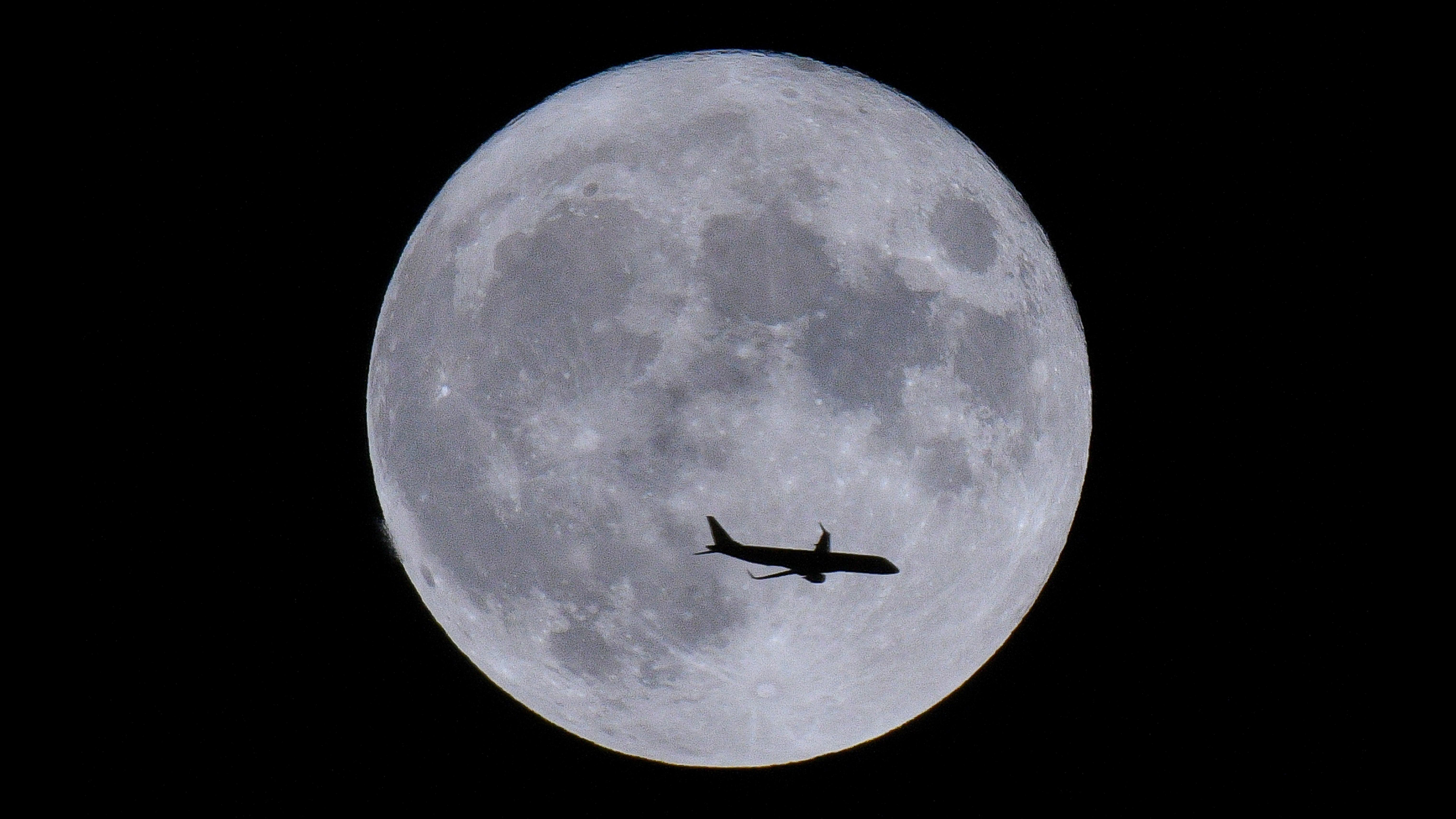DJI Mini SE vs Mini 2 SE: How much more does this drone update get you?
DJI’s Mini SE drone is an entry-level product, but does the newer Mini 2 SE refresh offer much more for your money?
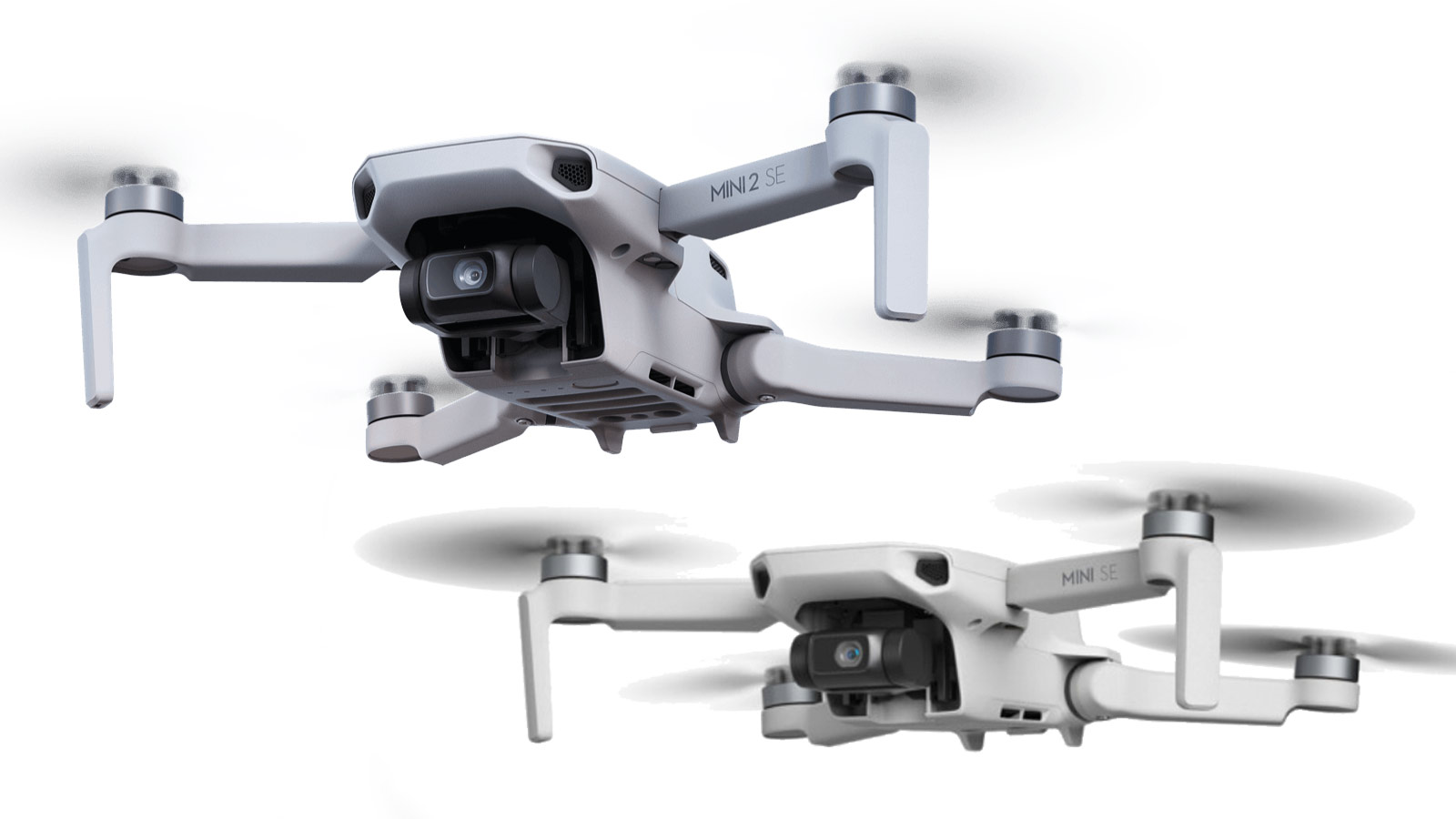
In February 2023, DJI announced the DJI Mini 2 SE with little fanfare, and a predictable inflationary price bump, but there are changes inside in this DJI Mini SE successor. But when the newer version becomes available, will the newer more expensive version be worth the extra (assuming the Mini SE stays on sale in some places)?
Before we dig deeper, though, what are these budget drones? The answer is likely readily apparent to anyone familiar with the tiers of iPhone Apple offer; the iPhone SE is the cheapest, based on older styling and tech than the latest models. It exists to keep the entry price point for Apple’s generally pricey products low, yet maintains the brand’s high minimum standards.
We’re sure it’s no coincidence that DJI chose the ‘SE’ moniker. In general it seems much of the overall feel of DJI’s generally high-quality packaging owes something to Apple, but then the same could be said of many tech firms now.
Still, in a growing market the ‘SE’ was a means of keeping alive expensive R&D which was still more than good enough for most users. Where Apple recycled the shell of older iPhones, DJI first took the 2019 Mavic Mini and repurposed the shell and many other components as the Mini SE in 2021/22 (depending where you lived). This while the Mavic Mini was replaced by the improved Mini 2.
The upshot; yes, there are definitely a few very similar product names (another comparison which can be leveled with the fruit-based tech firm), and now there are more choices from DJI in this crucial weight category. (We shouldn’t forget the Mini 3 has effectively replaced the Mini 2, while a Mini 3 Pro sits above that.
Outside the ‘mini’ zone DJI has other drones, like the heavier Mavic 3, but all the drones with ‘Mini’ in the name have a take-off weight of 249g or below. That puts them in the European A0 class, or below the registration weight in the USA. That’s why you see so much investment and choice here. Which, then, is the right choice for you?
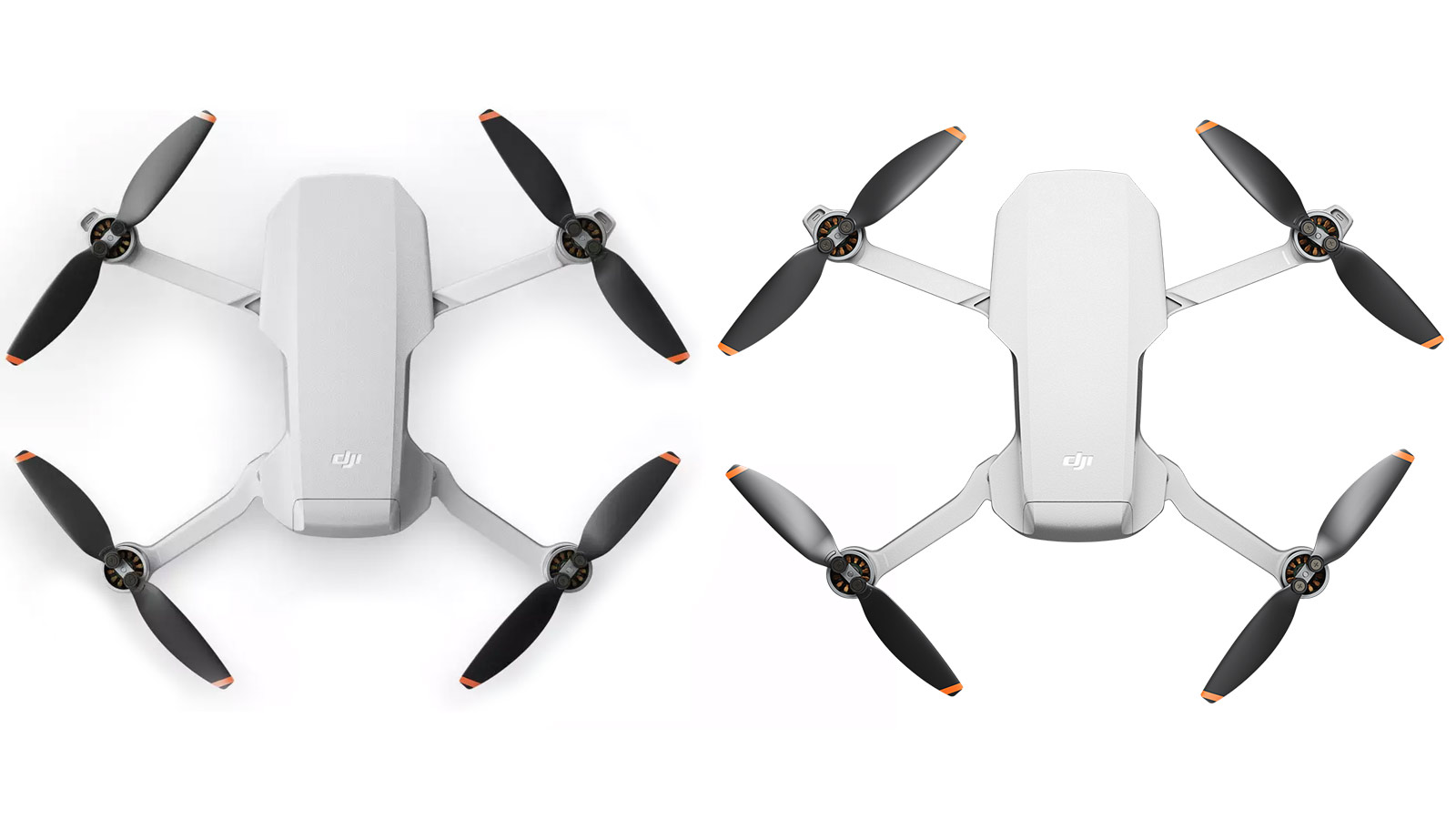
DJI Mini vs Mini 2 SE: Build and design
Why you can trust Digital Camera World
| Header Cell - Column 0 | DJI Mini SE | DJI Mini 2 SE |
|---|---|---|
| Take-Off Weight | 249g | 249g |
| Size | 159 x 203 x 56mm | 159 x 203 x 56mm |
| Folded size | 138 x 81 x 58mm | 138 x 81 x 58mm |
| Diagonal span | 213mm | 213mm |
| Sensors | Downward | Downward |
Simply put, we’re not going to need to spend a lot of time on this heading. The most obvious difference between the two drones themselves is the model name on the arm. That’s because the airframe remains the same between the two drones, and, indeed, it was inherited from the Mavic Mini before that.
The design is a good one, with propellor blades which extend thanks to centripetal force when in use, helping the aircraft fold to a compact size. There is a 3-axis gimbal around the camera at the front, shielded to some extend by the fuselage overhang. The replaceable battery pops in and out of a door at the rear and, when the battery is in place, a quick tap of the power button will show you the charge on a 4-light power meter.
Both drones accept a MicroSD card and have a USB-C socket for charging the battery.
Don’t worry though, there is a bit more going on here as you’ll discover when we get to the Controller and Range heading.
DJI Mini SE vs Mini 2 SE: Speed and manoeuvrability

| Header Cell - Column 0 | DJI Mini SE | DJI Mini 2 SE |
|---|---|---|
| Horizontal Speed | 13 m/s | 13 m/s |
| Ascent Speed | 4 m/s | 4 m/s |
| Descent Speed | 3 m/s | 3 m/s |
| Maximum wind resistance | 10.5 m/s (Scale 5) | 10.7m/s |
The same airframe has more or less the same level of speed and manoeuvrability. Not a surprise, for sure, but it is still worth noting that the wind resistance of 10.5 meters per second is a notable improvement on the first Mavic Mini, which means that both of these drones are a little more reliable in gusts. This is helped by DJI’s software literally enabling the drone to lean into the wind at up to 20˚ (or 30˚ in the faster ‘Sport’ mode).
The built in GPS and downward-facing optical sensor also mean the drone is good at maintaining its position or heading with minimal effort on the pilot’s part. For users focused on the quality of video or image they’re capturing that is significant.
Interestingly, though, the Mini 2 SE claims a slight improvement wind resistance; an extra 0.2m/s bringing it up to 10.7 m/s. This is still very much in the same wind force Level 5 as the Mini SE, but now matches the Mini 3 series. Beyond that, it seems, for now anyway, the physics of these lightweight drone’s sail area versus weight is the limiting factor.
DJI Mini SE vs Mini 2 SE: Battery life
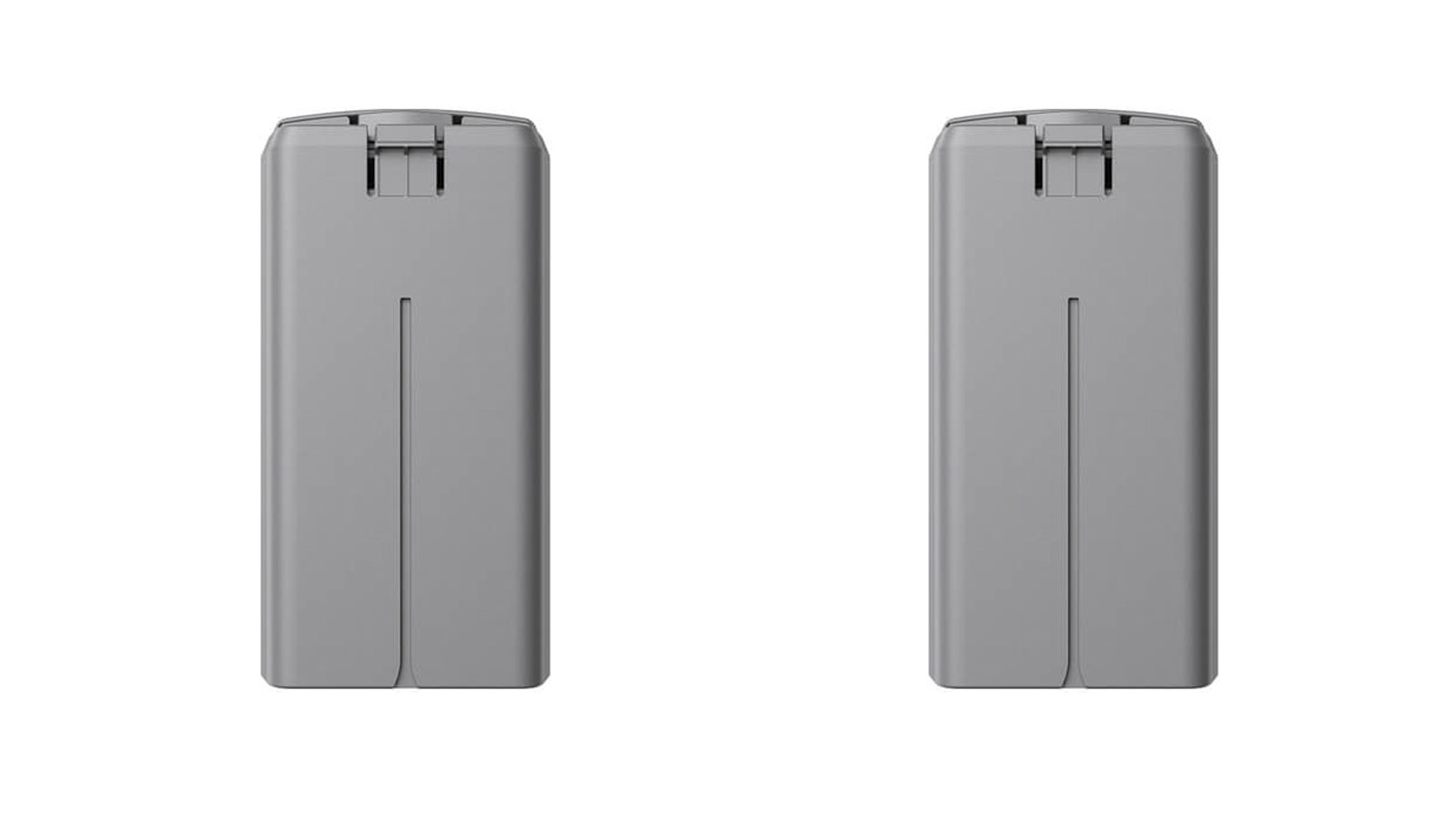
DJI Mini SE flight time: 30-minute max
DJI Mini 2 SE flight time: 31-minute max
While both drones use the same battery – listed on DJI’s accessory shop as the DJI Mini 2 battery – it seems that the Mini 2 SE can squeeze an extra minute of flight time out of it. A minute isn’t a lot, but that is useful time, at least if you’re looking to get to a certain position and start capturing. If you’re just in the air for fun – and who can blame you – then take-off and landing are likely less of a chore
Minimal improvements like this come with improvements to motors or just the software driving them (both drones use identical propellors, too). It is worth noting, though, that in both cases the maximum flight time is measured at constant forward travel; hovering actually uses more power so drains the battery a little faster.
Sadly, unlike the Mini 3, there is no option of installing a more powerful battery for an extended flight time, but half an hour is still an impressive amount of time, beating the Autel Nano, for example. There is also the option of DJI’s Charging Hub for these batteries. It has three bays, and charges in sequence, making it easier to charge (and carry) batteries efficiently.
DJI Mini SE v Mini 2 SE: Gimbal
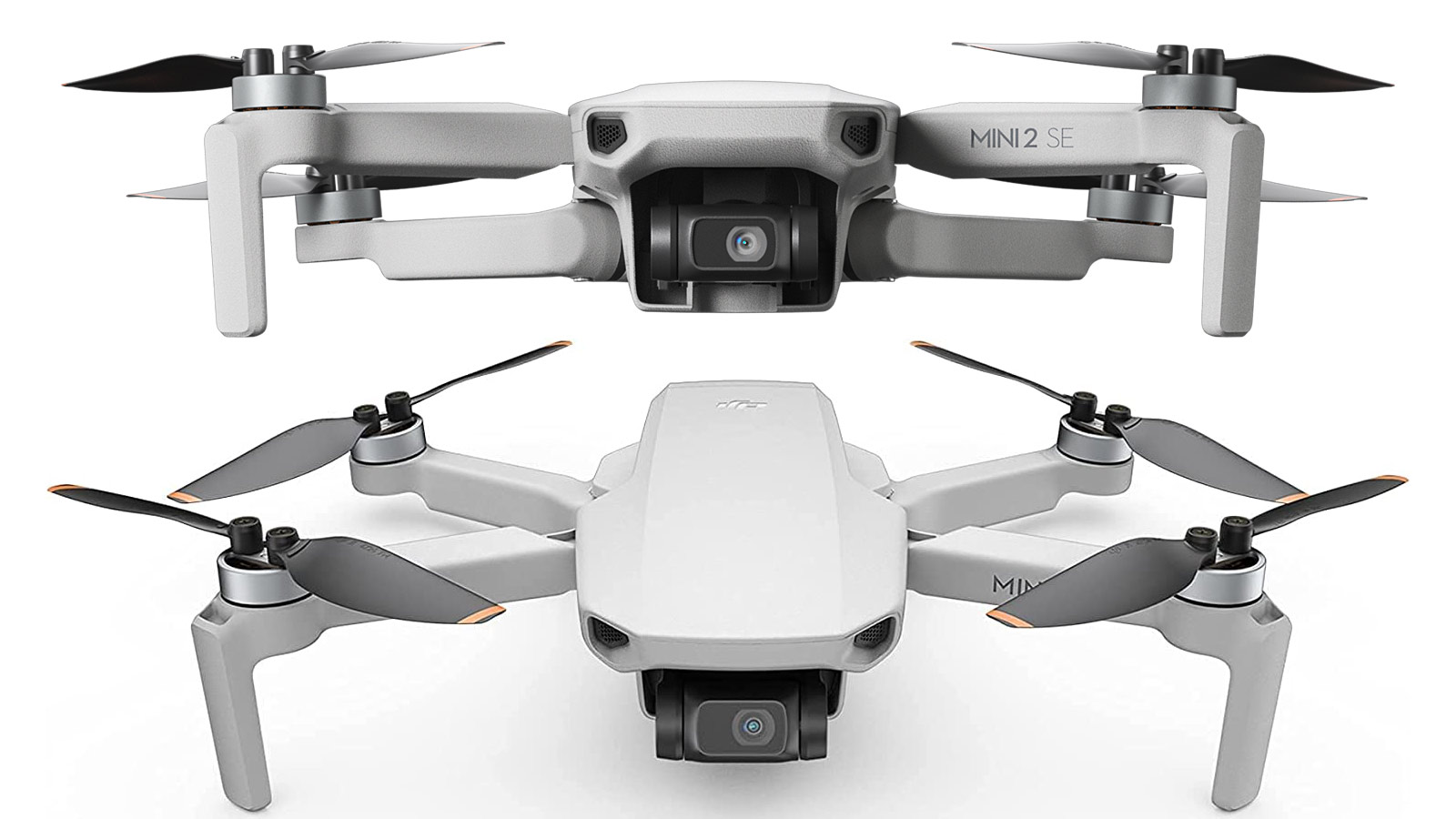
| Header Cell - Column 0 | DJI Mini SE | DJI Mini 2 SE |
|---|---|---|
| Axis | 3 (pitch, roll, yaw) | 3 (pitch, roll, yaw) |
| Tilt | -110˚ to 35˚ (-90 to +20˚ ctrl) | -110˚ to 35˚ (-90 to +20˚ ctrl) |
| Pan | -20 to 20˚ | -20 to 20˚ |
| Tilt speed | 120˚/s | 120˚/s |
Having a gimbal-mounted camera is probably what truly sets aside DJI and competitors like Autel aside from the herd of cheaper beginner drones. Sure, you can go cheaper by replacing this mechanical component with simple cushioning, but the results are poor (at least that we have seen so far).
The 3-axis gimbal – and its mount –both absorb the vibrations of the aircraft and counter the bodies movements to ensure smooth video is output from the camera. Both drones also offer the same level of manual control; you can tilt the camera from straight down to level (or 20˚ up, via an option in settings).
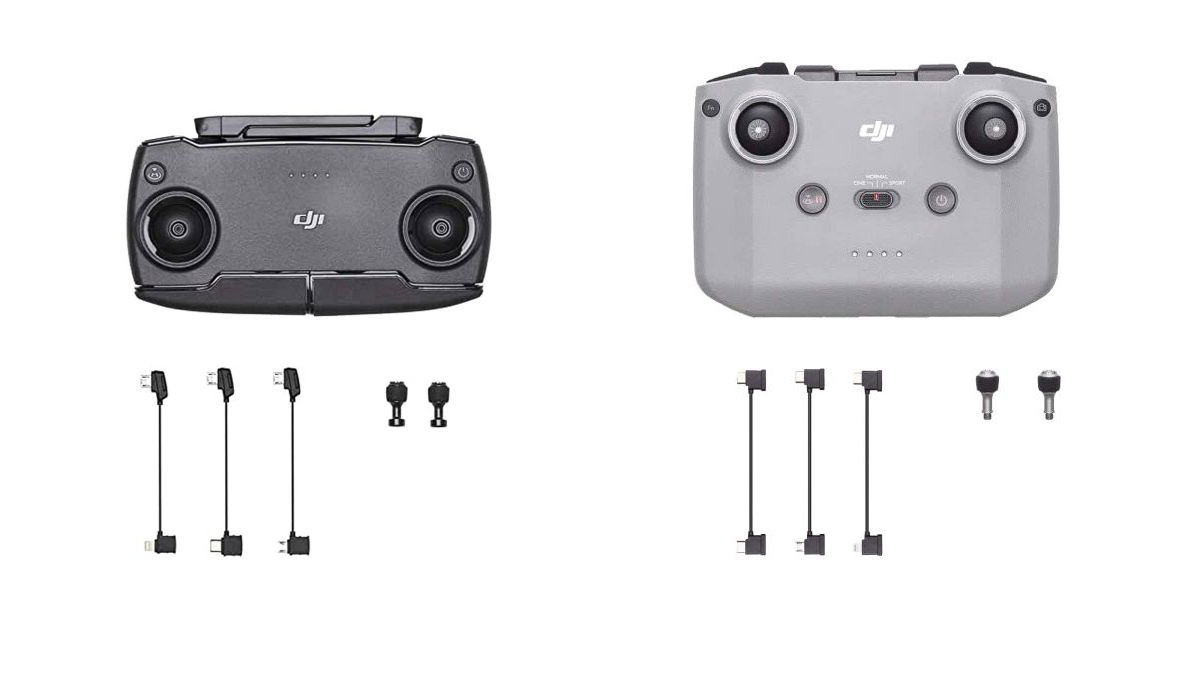
| Header Cell - Column 0 | DJI Mini SE | DJI Mini 2 SE |
|---|---|---|
| FCC (USA) Range Limit | 4000m / 2.5 miles | 10000m / 6.2 miles |
| CE (UK/EU) Range Limit | 2000m / 1.25 miles | 6000m / 3.7 miles |
| Battery | 2600 mAh | 5200 mAh |
| Phone Grip space / thick | 160 mm long x 8.5mm thick | 180 x 86 x 10mm device |
| Live View Quality | 4 Mbps / 720p | 8 Mbps / 720p |
Here is where we see the biggest difference between the two models. The New Mini 2 SE comes with DJI’s new style of controllers, the RC-N1, supporting the tech DJI call OccuSync 2, the principal advantage of which is longer transmission range. This controller is now offered across DJI’s entire consumer range.
The RC-N1 controller is a physically bulkier design than that found with the Mini SE, but it has several refinements. It doesn’t have exposed hinged antenna or fold-out grips for your phone (which serves as monitor). Instead the top of the unit slides up and grips the phone above the sticks, meaning you don’t have to tip your head so far down as you flick your eyes from aircraft to monitor.
It also has the ability to top up your phone charge from its much bigger battery; no bad thing given flying keeps the phone screen on so draws power. With a good, modern phone you also get a good, bright screen.
The actual video quality of the preview ‘live view’ video is better too – twice the bitrate will mean less pixelation as well as the advantage of a more robust stream. That’s not to say that the Mini SE was bad either, and here we refer only to the quality you see as you fly – higher quality video is recorded to the card.
We must also add that longer range doesn’t mean you can fly the distance specified. For the most part you’re limited to considerably less by law anyway. It is instead a measure of signal strength, so if it is higher control and live view will be more reliable in the face of interference.
DJI Mini SE vs Mini 2 SE: Still photos
| Header Cell - Column 0 | DJI Mini SE | DJI Mini 2 SE |
|---|---|---|
| Resolution | 4000 x 3000 pixels | 4000 x 3000 pixels |
| Sensor size | 1/2.3in CMOS | 1/2.3in CMOS |
| ISO range | 100-3200 | 100-3200 |
| Effective focal length (EFL) | 24mm (83˚ FOV) | 24mm (83˚ FOV) |
| Formats | JPEG | JPEG |
| Modes | Single Shot, Interval | Single Shot, Interval, Panorama |
Once again, there is essentially nothing to separate the drones here; they feature the same sized CMOS image sensors and the same features – well, except Panorama.
Panorama is an automated option, in which you can simply hover the drone looking in the right direction and let it take a series of images in sequence, which it will also automatically stitch for you into a panorama. This feature – available on most DJI drones – was left off the Mini SE but it seems the Mini 2 SE can handle it.
Otherwise the images are captured as 4:3 at the sensor’s full 12 megapixels (or a cropped 16:9 option) and saved as JPEGs. You can tweak the settings before you shoot, but there is no RAW option on either drone.
DJI Mini SE vs Mini 2 SE: Video
| Header Cell - Column 0 | DJI Mini SE | DJI Mini 2 SE |
|---|---|---|
| Resolution | 2.7K (2720 x 1530) @ 30fps / 1080P @ 60fps | 2.7K (2720 x 1530) @ 30fps / 1080P @ 60fps |
| Bitrate | 40 Mbps | 40 Mbps (tbc) |
| Max zoom | None | 4x digital zoom |
Keeping things cost-effective (and helping differentiating DJI’s products) means the Mini 2 SE still restricts itself to 2.7K video. This is more or less the same pixel count as the iPhone 14 Pro Max (2796 x 1290), so it’s nothing to sniff at, but of course those looking for 4K will be disappointed. DJI, no doubt, would direct them to the pricier Mini 3 series.
We already looked at the gimbal, and this is a good point to reiterate that resolution is only one measure of the quality of drone video. Video is stable and 2.7K is plenty sharp for most uses. Unlike the Mini 3, however, the camera remains horizontal, so lower resolution is exposed if cropping for vertical format. Similarly the digital zoom is more of a novelty and even at 2x will expose the limitations of a 12 megapixel sensor.
It is a small sensor, with fixed rather than autofocus, but that – too – matters less than you might imagine; drone video is generally shot in good light at a distance. Although this is a refresh and you might ask for a higher spec, we still think the video will surprise most in a good way.
DJI Mini SE v Mini 2 SE: Software features
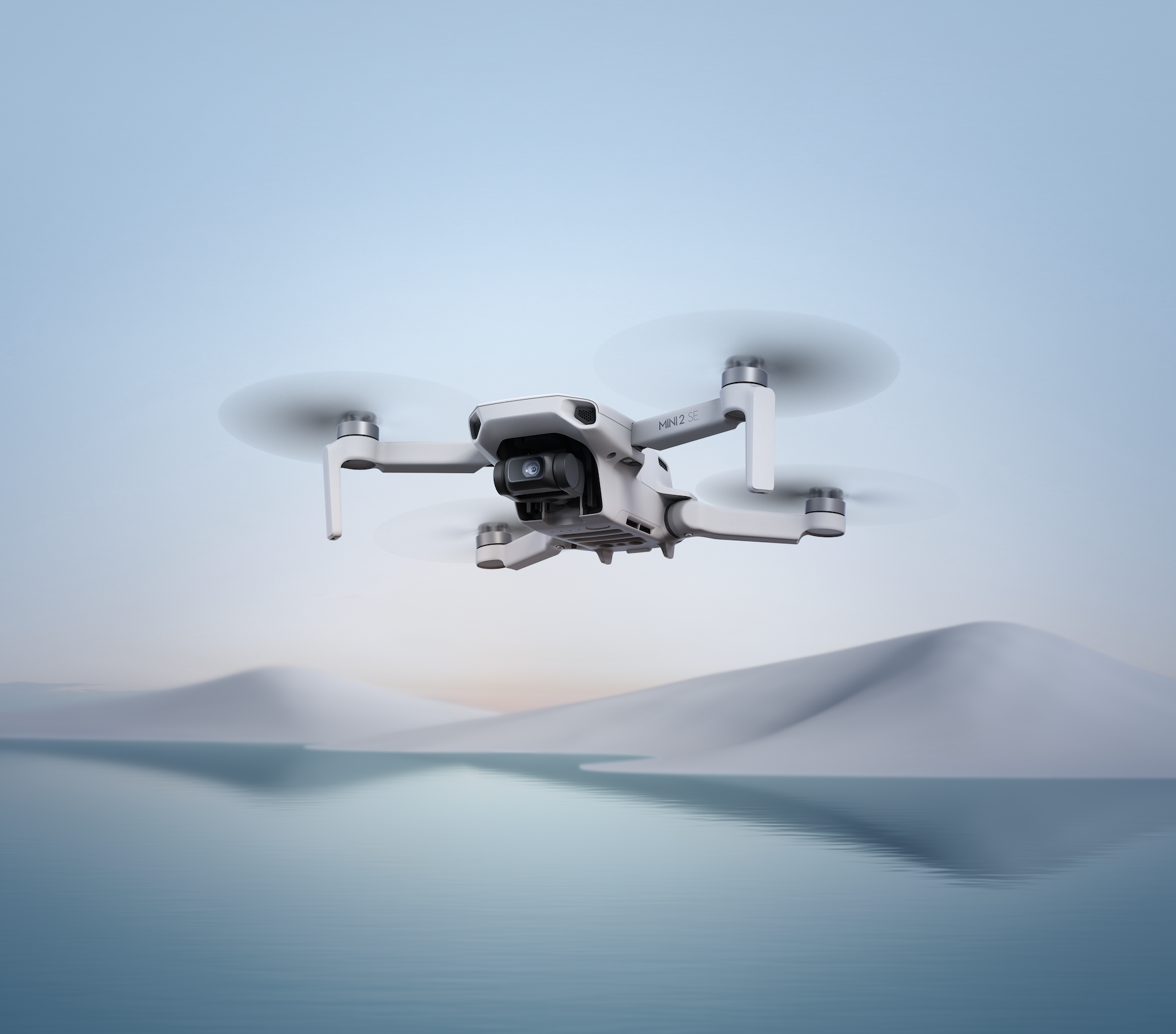
DJI Mini SE: QuickShots: Rocket, Dronie, Circle, Helix, Boomerang
DJI Mini 2 SE QuickShots: Rocket, Dronie, Circle, Helix, Boomerang
Both aircraft require a phone (iOS or Android) with their DJI Fly app to provide access to all the features and, indeed, provide crucial feedback. It is a good tool, and has been refined over time – it is now found on all DJI consumer drones.
With the same tech on board the aircraft there isn’t too much for comparison here. DJI provides a range of ‘QuickShots’ in which the drone navigates itself and the camera to produce a share-worthy clip of about 15 seconds with very little required of the operator. Both drones offer the same bundle of QuickShots and, lets face it, they’re fun.
Of course you could view the Panorama function, only on the Mini 2 SE, as living in this heading too, in which case that’s a small win for the newer model.
DJI Mini SE vs Mini 2 SE: Verdict
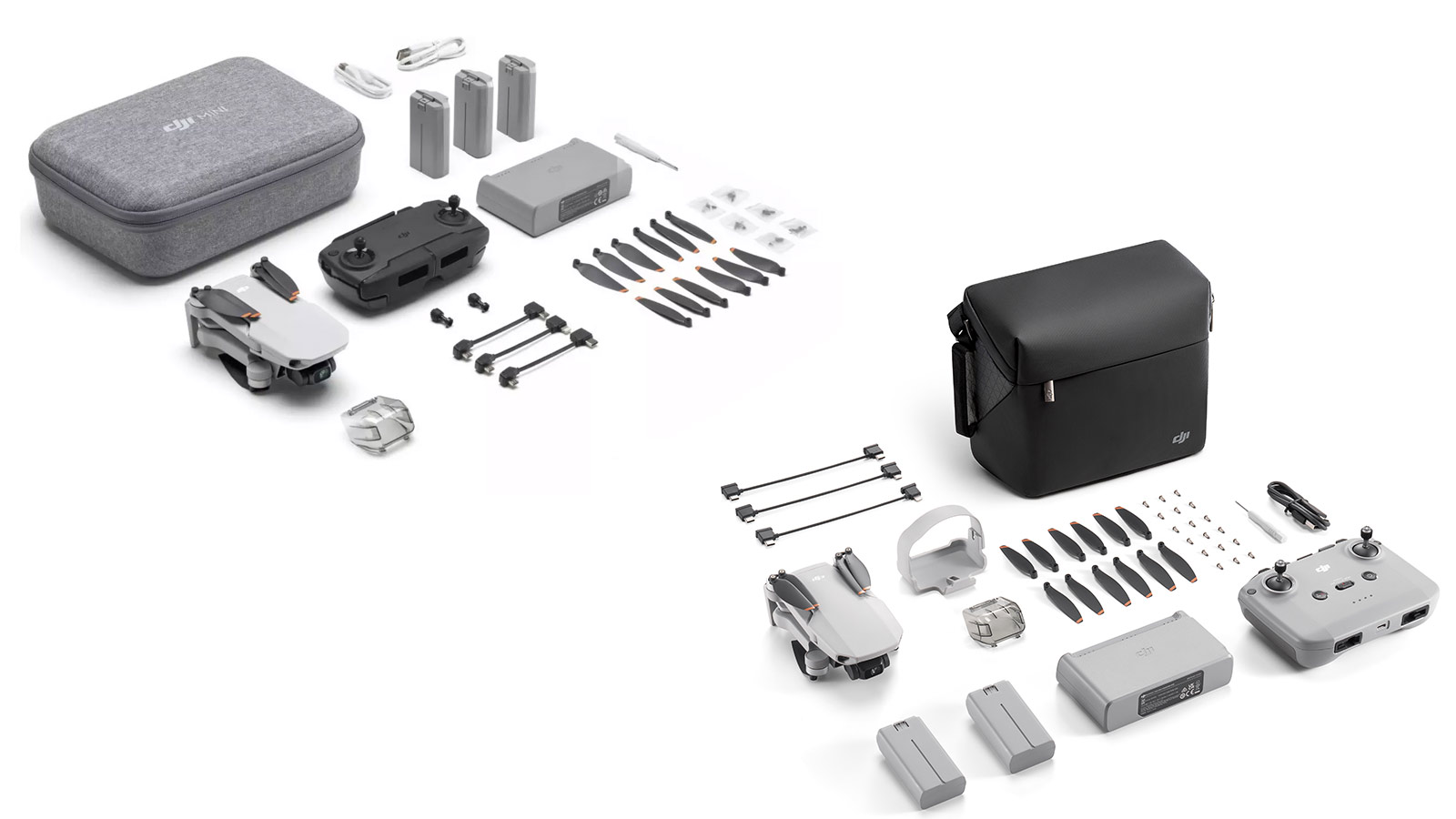
So there is no question that the DJI Mini 2 SE is the better machine because, well, it’s broadly the same but with an unarguably newer, better controller. That said, while both linger in the supply chain, is it actually worth the bigger spend? We’re not completely sure.
We do love the Panorama feature, especially when the results are dropped into a viewer app which allows you to scroll and drag around the inverse sphere. But the primary advantage is the improved controller. The Mini 2 SE makes tangible gains in signal robustness and you can see the benefit the extra bandwidth has in the live feed. The Mini SE is definitely happier in clearer skies or further from urban interference, while its successor has no such vulnerabilities.
If you’re looking to keep costs low then you’re still getting a fine product in the Mini SE. Some might even argue a smaller and lighter controller is a benefit (especially if they’ve got a dependable phone battery). We don’t imagine the older SE will be available indefinitely so if you want a bargain it’s time to snap it up. Recorded video looks the same, too. The advantages of a live feed seem relatively insignificant once you’ve copied the video to your phone or computer to play it back.
In both cases, DJI offer the drone and a single controller or a Fly More bundle with extra spare propellors, a total of three batteries, a charging hub, and a bag. The Mini 2 SE also throws in a handy rubber propellor protector which adds an extra layer of safety, while it switches from zipped hard case to a more traditional camera bag with strap format.
We mention this because the Fly More bundle is a good deal and because we’ve seen it being heavily discounted, adding weight to the Mini SE’s advantage. That’s not to say we don’t like the Mini 2 SE, but if you’re looking to pay a little more then take a look at the Mini 3 too!
Get the Digital Camera World Newsletter
The best camera deals, reviews, product advice, and unmissable photography news, direct to your inbox!

With over 20 years of expertise as a tech journalist, Adam brings a wealth of knowledge across a vast number of product categories, including timelapse cameras, home security cameras, NVR cameras, photography books, webcams, 3D printers and 3D scanners, borescopes, radar detectors… and, above all, drones.
Adam is our resident expert on all aspects of camera drones and drone photography, from buying guides on the best choices for aerial photographers of all ability levels to the latest rules and regulations on piloting drones.
He is the author of a number of books including The Complete Guide to Drones, The Smart Smart Home Handbook, 101 Tips for DSLR Video and The Drone Pilot's Handbook.
